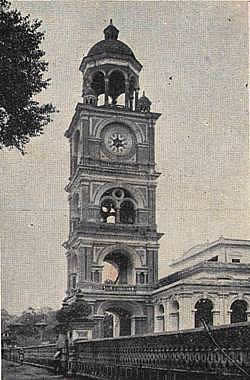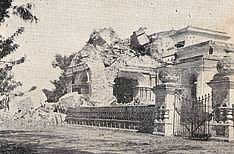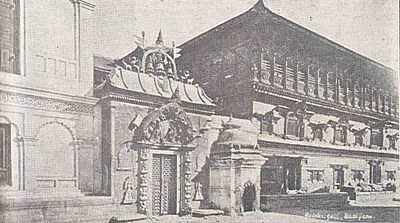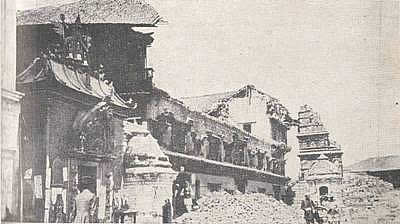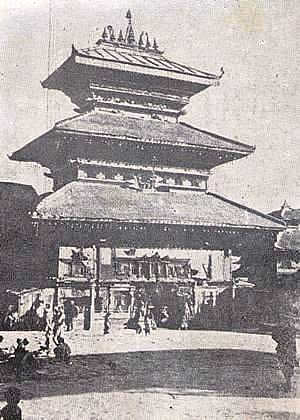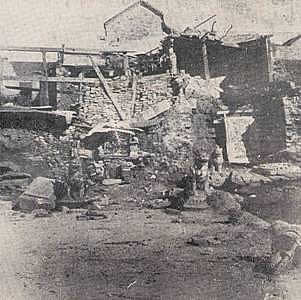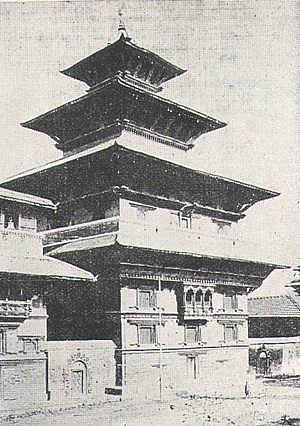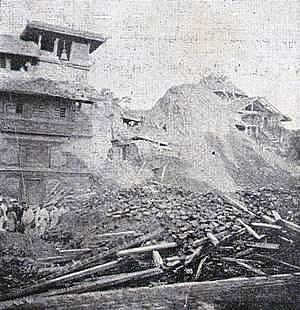13-National Earthquake Safety Day, 2011, Nepal
1934 Nepal-Bihar Earthquake
Fig-3 (Images of the then Ghantaghar at Kathmandu, a Clock Tower; Before & After destruction by 1934 Earthquake) Image Courtesy : Nepal Ko Mahabhukampa by Shree M. J Brahma Sumsher
Fig-4 (Images of the then 55 Jhyale Durbarat Bhaktapur; Before & After destruction by 1934 Earthquake) Image Courtesy : Nepal Ko Mahabhukampa by Shree M. J Brahma Sumsher
Fig-5 (Images of the then BhairabMandir, a Temple at Bhaktapur completely destroyed by 1934 Earthquake) Image Courtesy : Nepal Ko Mahabhukampa by Shree M. J Brahma Sumsher
Fig-6 (Images of the then Temple at Lalitpur Durbar Square; completely destroyed by 1934 Earthquake) Image Courtesy : Nepal Ko Mahabhukampa by Shree M. J Brahma Sumsher
Destruction in India
Widespread damage was caused in Nothern India; in Bihar province. The areas where the most damage to life and property occurred extended from Purnia in the east to Champaran in the west and from Kathmandu in the north to Munger in the south. Munger experienced the strongest ground shaking.
In Indian region, slumping, ground fissuring and emission of sandy water were observed at many places including in Darbhanga and Madhubani districts of Bihar. There was significant damage to embankments, railway bridges and buildings in Bihar. Despite of intense shaking, no signs of liquefaction were seen at Munger. In addition, hilly regions of Darjeeling district (in the state of West Bengal) and Sikkim sustained extensive damage, including damage in roads and highway bridges.
Extensive liquefaction of the ground took place over a length of 300 km (called the Slump Belt) within the isoseismal intensity of IX-X; in which many structures subsided. Subsidence of roadway & railway were observed with six feet high railway embankment flattened to the surrounding ground level.
In Munger, extensive ground acceleration was responsible for the destruction of entire town. Almost all kind of structures underwent damage. Fissuring and Slumping were almost absent except at few locations. Higher ground acceleration was attributed for the extensive damage in this town of Bihar.
In Muzzafarpur, sand fissures erupted at several places in town. The wells were choked with sand while water levels in tanks became shallower due to sand deposited in the tank beds. Most of the buildings in Muzzafarpur were damaged. All the Kutcha buildings collapsed while other buildings suffered damage due to sinking and cracking of the ground.
In Sitamadhi, not a single house was left standing.
